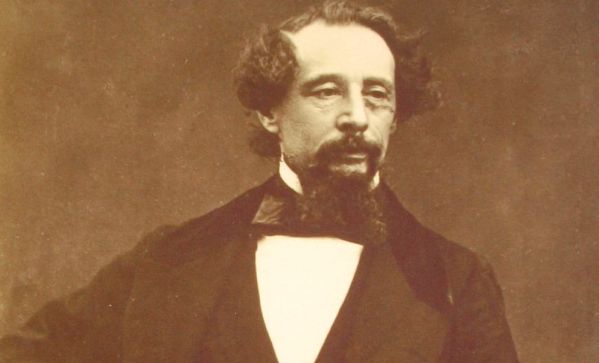This week marks the bicentennial of Charles Dickens, who if not the English language’s greatest novelist was certainly the most prolific. Aside from the collective shudder of arts & letters graduates, why is that latter distinction worth recalling? Simply, Dickens’ influence on modern writing and storytelling remain as staggering as his output. The author’s skill at plotting serial narratives is still felt in today’s weekly instalments of Breaking Bad and Mad Men. Before he wrote about eccentric wedding-dress clad spinsters (Great Expectations) and chain-rattling ghosts (A Christmas Carol), Dickens was a journo, depicting the grimy streets of London’s industrial revolution. He would continue to delineate this world in his novels, notably the prescient Hard Times, taking umbrage against its injustices and satirizing the powers-that-be with devastating irony. For today’s readers, it’s as intimidating as ever to crack open that 1,000-page copy of Martin Chuzzlewit, and just as rewarding to complete it. To mark the occasion – the official birthday is Feb. 7 – we’ve considered three of Dickens’ page-turners in terms of what might be their most modern-day analogs.
Oliver Twist >> Clockers (Richard Price)
If you’re looking for a contemporary tale of a children in a criminal underworld, go no further than Richard Price’s Clockers. Dickens’ Twist was part of a gang of cockney pick-pockets recruited by an evil ‘jew’ named Fagin. Price gives us a gang of vulnerable black youth recruited to be drug-dealers (‘clockers’) by local kingpin Rodney Little out of his candy shop. Everything in Price’s book is sharply observed first-hand, from the language used by the dealers to the devastating effects their lives of crime have on their families. It’s a world he’d later draw on again as writer for HBO’s The Wire.
Bleak House >> Under the Dome (Stephen King)
A sprawling indictment of Victorian London, Bleak House starts with the central metaphor of the city’s “dense and choking fog” filling in for an impenetrable legal system. If there’s anyone who comes close to challenging Dickens for sheer wordiness, it’s King, who in his later works shows a similar concern for contemporary society. Such is Under the Dome, which sees a small town separated from the outside world by an impenetrable force field. The results are King’s metaphor of America as security state, as the most conservative forces in his microcosmic town of Chester’s Mill rise to power.
David Copperfield >>Midnight’s Children (Salman Rushdie)
It’s no coincidence that each of these two novels begins with its narrator recalling the particulars of his own birth, precisely at the stroke of Midnight. Dickens acknowledged Copperfield as his personal favourite; its narrative recounts a lifetime of struggle, escaping the perils of early workhouses and the casual brutality of London life. Rushdie’s Saleem Sinai tells his own tale of growing up in the equally crowded Bombay, on the birth of India’s independence in 1947. Sinai’s journey to adulthood eerily parallels events in the country around him. Its mingling of the individual and the universal, of realistic societal ills with supernatural elements, and of the comic with the tragic, all show how the core of Dickens’ ouevre are inherited by today’s writers, and withstand the test of time.
——————–
Image courtesy of USM MS.


